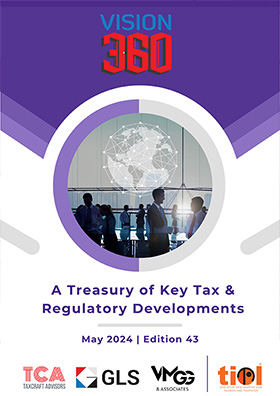Failure to examine panch witness and variation in purity of samples results in acquittal of accused under NDPS Act by High Court
By TIOL News Service
NEW DELHI, DEC 26, 2014: THE Appellant challenged the judgement dated 29th September 2010 passed by the Special Judge - NDPS convicting the Appellant for the offence under Section 21(c) of the Narcotic Drugs and Psychotropic Substances Act, 1985 for being found in possession of 292 gms . of heroin as well as the judgment on sentence dated 6th October 2010 whereby he was sentenced to rigorous imprisonment (RI) for ten years along with a fine of Rs. 1,00,000 and in default, to undergo simple imprisonment for six months.
The trial Court concluded that even if the purity percentage was taken as per the second report then the actual quantity of heroin worked out to 292 gm, which was a commercial quantity. The scale which the NCB used for weighing the samples on the spot was different from the scale used in CRCL and, therefore, the variation in the weight of the sample could be explained.
On failure to examine the witness, the trial Court held that the fact of the said public witness joining the raiding party was spoken to by PWs 4 and 5. Nothing could be inferred from their testimonies that the independent witness was only "named on papers". The officers had no motive to falsely implicate the accused. The trial Court accepted the testimonies of PWs 4, 5 and 8 as being reliable and trustworthy. Accordingly, the trial Court held the accused guilty.
However, the High Court held:
In a large number of cases involving the NCB, there is a failure to produce the panch witness named. There are cases where panch witnesses are not associated at all and it is sought to be explained by the prosecution that despite its request no person from the public came forward to join in the raid. The latter explanation has been accepted by some Courts by taking judicial notice of the fact that the members of the public are generally reluctant to be involved in criminal cases as witnesses. However, in a case where the NCB specifically names a public witness as being associated in the arrest and seizure, its failure to produce such person for cross-examination must be specifically explained by it.
In the present case the failure to produce the public witness was attributable to a false address given for the witness. This raises serious doubts as to whether such a witness existed at all. It will amount to falsification of the trial Court record if the thumb impression on the arrest and seizure memo is attributed to a witness who is not able to be produced and it is shown that the address given for him, even in the first instance in the summons issued by NCB, was false. This casts serious doubts on the trustworthiness of the prosecution version and in that circumstance the benefit of doubt should certainly go to the accused.
With regard to variation in purity of samples, the High Court held:
A careful examination of the answers of Dr Mahesh Kumar, (who was examined by the Court) shows that this witness was presuming that there was no possibility of the second set of samples coming from a different source only because the records in the case available with the laboratory showed that on both the occasions the samples had come 'properly sealed.' It appears to the Court that the above answer was not a scientific one but a practical one which does not explain the considerable variation in the purity percentage of DAM and also the absence of two constituents in the second set of samples. The expert failed to explain how when the first set of samples showed seven constituents, even accounting for hydrolysis, there was a complete absence of two constituents in the second set of samples. The literature produced by both the parties points to the possibility of degradation of DAM to MAM and not the heroin when it is in crystallized form.
While the literature shows that even in the same set of samples from the same source, there is possibility of differences in percentages on account of hydrolysis of DAM into MAM, they do not explain the possibility of total absence of constituents in the second set of samples. In the instant case, this raises a doubt to whether both the set of samples were from the same source.
The Court, on a careful perusal of the evidence of the expert evidence in the present case is not satisfied that the prosecution has been able to explain the considerable variation in the purity percentages of DAM in the two samples sent for testing. Even on this score, the Court is inclined to grant benefit of doubt to the Appellant.
Accordingly, the High Court set aside the trial Court order convicting the Appellant and ordered his release if not wanted in some other case.
(See 2014-TIOL-2370-HC-DEL-NDPS)














